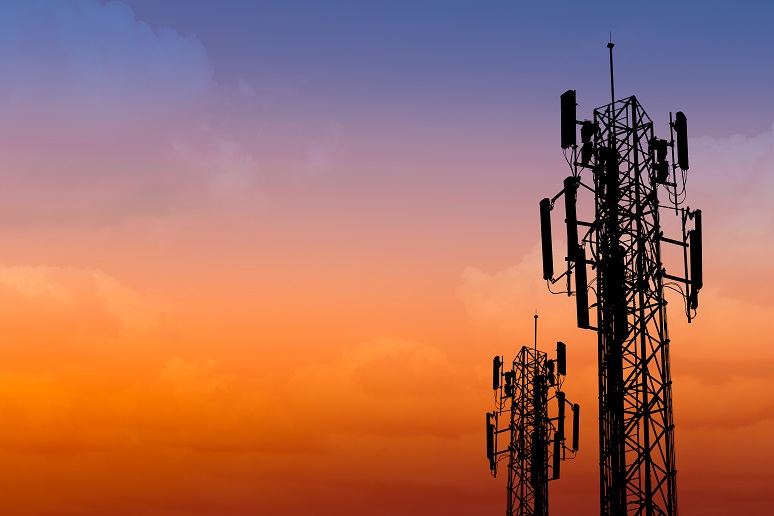After what seemed like an eternity,
the combination of T-Mobile and Sprint is finally complete. The negotiations towards the current deal began in April 2018, but the plan was sidelined in June 2019, when the Attorneys General of 10 states mistook themselves for the U.S. Department of Justice and
launched a lawsuit based on the spurious claim that four national carriers were somehow “required” to ensure competition in the wireless market.
The suit was settled in February when U.S. District Judge Victor Marrero acknowledged the dynamic nature of the wireless market and flatly rejected their arguments.
So, what will the new T-Mobile (it’s unclear what will happen to the Sprint brand) bring to the table? Here are some of the big areas that I will be tracking as the new T-Mobile takes the stage:
Spectrum assets — The combined T-Mobile will be working with a vastly different spectrum portfolio than the others. T-Mobile invested heavily in low-band 600 MHz spectrum that offers the best performance over wide areas,
a fact T-Mobile has been pitching in its ads. What Sprint brings to the combination is extensive (i.e., around 100 MHz in most markets) mid-band holdings in the 2.5 GHz band (3GPP Band 41).
That means that the new T-Mobile should be less reliant on
millimeter-wave frequencies 20 GHz and above. Those very high-frequency bands have been key in the operators delivering significantly higher transmission rates than 4G LTE, the enhanced mobile broadband promise of 5G technology. The problem with those very high-frequency bands is the signals fade over relatively short ranges (e.g., around 100m), and they are highly linear (i.e., they don’t turn corners). That has meant that the carriers can deliver very high data rates in small cell hot spots operating on millimeter-wave bands, but lower rates over their macro networks.
T-Mobile has been experimenting with millimeter wave, but we will have to see how those plans change now that they are rolling in mid-band spectrum.
With its spectrum portfolio, T-Mobile could potentially alter that arrangement and offer a more reliable, ubiquitous enhanced mobile broadband service. Verizon has held the crown for the most reliable cellular network for eons, and it would take a copious marketing budget along with the technology to knock Verizon off its perch.
New leadership — With the acquisition complete John Legere, T-Mobile’s long-haired, ever-smiling CEO since 2012, will be stepping down and handing the reins to the COO and his right-hand man, Mike Sievert. That’s effectively replacing one top-notch consumer marketer with another.
Some of Sprint’s executive team is being brought along most notably, CTO John Saw, but T-Mobile has grown as a consumer company, and a darn good one. I for one have serious concerns about whether the new T-Mobile will see more mobility managers sporting ‘T-Mobile pink’ (Technically,
T-Mobile’s color is “magenta,” and the company has trademarked a particular shade known as “RAL 4010”).
To whither the wireline or not — The other new business for T-Mobile will be wireline services. Sprint has long been a highly regarded provider of wireline voice and data services, a business that T-Mobile never pursued. The addition of wireline puts T-Mobile product line on the same footing as Verizon and AT&T, but Sprint has always lacked a local presence, which put it at a disadvantage for local access costs — costs they would often be paying to Verizon or AT&T.
Until now, mobile operators have not generated meaningful synergy between their wireless and wireline businesses, and we will have to see if Sievert sticks by Legere’s commitment to retain the wireline business.
Creative engine — One element of both T-Mobile’s and Sprint’s business has been a willingness to think outside the box and take technical risks. Sprint had long been the greatest source of new enterprise-oriented services like Sprint Mobile Integration, an early (and unique) fixed-mobile convergence solution. The company continues to partner with third-parties to come up with new services.
T-Mobile also played at the edge; introducing things like Unlicensed Mobile Access (UMA), a Wi-Fi/cellular offering, and
its DIGITS business service back in 2016. While none of these services were particularly successful in the hidebound cellular business, any technical innovation that isn’t at least 99% consumer-inspired is a glimmer of hope.
The Dish dilemma — The other loose end in all of this is Dish Networks. Those who have followed this soap opera from the outset will recall that one of the conditions of the acquisition was
that Sprint would have to sell its Boost Mobile prepaid business. Lo and behold, Charles Ergen, CEO of Dish Networks, agreed to buy it. With the T-Mobile acquisition wrapped up, Dish can now complete the Boost purchase.
Ergen, a former poker player and renowned dealmaker, has amassed some $420 billion worth of spectrum and has been itching to get into the wireless business for years. Starting with Boost, a mobile virtual network operator (MVNO) reselling Sprint’s network service, Dish now claims to be building a cellular network to compete with the majors, but the plans are sketchy and
the proposed $10 billion budget, totally unrealistic.
My prediction, Ergen makes a deal to come out on top, but there is no way in heck he’s building a cellular network.
Conclusion
So, we now have a new wireless provider with the scale to service the large enterprise market, but we essentially know nothing about them. We have a newly minted CEO, running a combined company comprised of a very successful consumer marketer, and an old-line telco that has been in a downward spiral for longer than anyone can remember — sign me up!
On the plus side, both Sprint and T-Mobile are scrappy competitors, who aren’t afraid to step out of the box when it comes to trying new technology. The combined company has a unique spectrum portfolio, though how it will measure up to the millimeter-wave ambitions of its two main competitors remains to be seen.
The question for our audience will be how committed the new T-Mobile is to serving the enterprise. For the most part, we’re not into magenta, but we aren’t at all opposed to seeing someone injecting some new thinking into an industry that seems unable to commit to any significant investment that isn’t focused on consumers.
Make no mistake about it, the consumer market drives the cellular business today, but that market is fully saturated. The solution the carriers seem to be pursuing hinges on private 5G networks and the Internet of Things (IoT). With enterprise Wi-Fi firmly entrenched, Private 5G is going to lose in virtually any application that can be supported by Wi-Fi. Wi-Fi connectivity also dominates in the consumer IoT space and plays a major role in industrial IoT.
Impacting the enterprise market will call for cellular services and capabilities that don’t exist today, and interface effectively with those customers' fixed unified communications and team collaboration solutions to deliver real value. Instead, they seem to be chasing fantasies of replacing Wi-Fi. It’s time for a little thought leadership on the enterprise mobility front and maybe the new T-Mobile can fill the gap.










